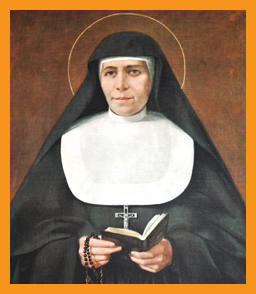Auxilium College of Education
Auxilium College of Education is a newborn shoot of 2012 from the gigantic tree of Auxilium College of Arts and Science that was founded in 1954. It is a minority institution established and administered by the Daughters of Mary Help of Christians commonly known as Salesian Sisters of Don Bosco, belonging to the Catholic Church. Its sole aim is to prepare dedicated catholic teachers for the Church and the Society, but members of other communities also are admitted without reference to caste or creed, and their rights of conscience are respected. True to the Charism of the Founders St. John Bosco and St. Mary Mazzarello, the college caters to the poor, socially backward, and the needy. The college offers one year B,Ed., course. The College has its own campus and offers facilities like well-lighted and spacious classrooms, a well-equipped library, computer center with internet and browsing center, laboratories, language lab, placement assistance to all the students.
| Grant of Recognition by NCTE: | |
| F.No. SRCAPP774/Bed/TN/2012/45946 Date: 06.09.20212 and F.SRO/NCTE/SRCAPP774/B.Ed/TN/2015-16/64566 | |
| Grant of affiliation by the university: | No:TNTEU/R/Syn.Oct2012-Item29/Order-B.Ed(N)/2012/840 |
| Second affiliation: | No: TNTEU/R/Affln./Syn-Feb2016-Item.No.07/2016/118 |
| Third affiliation: | No.TNTEU/R/Cont. AFFln./2019/1800 |
The College is run according to the principles and method of St. John Bosco, the greatest educator of the 19th Century and Founder of the Salesian Society and the co-foundress St. Mary Mazzarello. The Characteristics of Salesian youth spirituality is a commitment to one’s duty, filial relationship with God, meeting Him in the ordinary events of the day, the spirit of service, joy, and friendly rapport with all characterize life in the college campus. Mary in her attitude of openness to God and others is a model for all. MOTTO: The Motto of the college is KNOWLEDGE AND VIRTUE. The college Emblem constitutes a Book – Word of God, a lily, and a Lamp. The Book stands for Knowledge and enlightenment, and the Lily for virtue. The Lamp with the burning flame to lead the future generations to become enlightened and responsible persons in different spheres of life and it is a reminder to teacher-student Auxilians to keep the light of Knowledge and Virtue always alive. The hope and prayer of Auxilium are that every teacher-student Auxililam while attaining knowledge and being enlightened may strive to acquire Virtue so that Knowledge and Virtue blend to make her a perfect Educator.
| Pink and Blue are the college colors. | Pink symbolizes youthful cheerfulness | Blue stands for loyalty and fidelity. |
OUR FOUNDER AND CO-FOUNDRESS:

OUR FOUNDER
St.John Bosco (1818-1888)

OUR CO FOUNDERSS
St.Mary Mazzareello (1837-1881)
Maria Domenica was born on 9th May 1837 at Mornese in the Alessandria region of Italy. In her family, she received a grounding in solid piety, hard work, and a remarkable common sense and judgment which stood her in good stead when she became a Religious Superior. At the age of fifteen, she enrolled in the Association of Daughters of Mary Immaculate and started to take part in apostolic work for the girls of the area. A serious bout of typhoid contracted when she was 23 had a profound effect on her spiritual development. This experience of being physically frail deepened her sense of abandonment to God but also moved her to open a dressmaking workshop in order to teach girls about work, prayer, and the love of God. Thanks to her devout sacramental life and the wise guidance of Don Pestarino she made great progress in spirituality. When Don Bosco visited Mornese on 8th October 1864 she remarked ‘Don Bosco is a saint – I can sense it”. As Don Bosco’s work of caring for poor and abandoned boys grew, he saw the need for a religious congregation of women to fulfill the same dream for young girls. In 1872 Don Bosco chose her to help him found the Institute of the Daughters of Mary Help of Christians. As Superior, she showed herself to be an able teacher and guide in the spiritual life. She had the gift of serene and comforting cheerfulness, radiating joy, and drawing other young people to dedicate themselves to the education of girls. After her death, the Institute continued to develop rapidly. She left her Daughters a style of education permeated with gospel values: the search for God, known through enlightened teaching and fervent love, responsibility in work, openness and humility, the austerity of life, and joyful self-giving. SALESIAN SPIRITUALITY: John Bosco adopted the attractive spirituality of Francis de Sales to suit the needs of young people. Both were profoundly aware that God was to be found in the ‘bits and pieces’ of everyday life. Living those moments with love and awareness of the presence of God was the way to holiness. “Here (in this school) we make holiness consist of always being happy” – these words were uttered by Dominic Savio, who was a pupil in Don Bosco’s school, to a newcomer. Salesian spirituality has love, kindness, and generosity at its core. It is a practical, service-based love of God and neighbor – especially those in need. It is creative, optimistic, joyful, encouraging, and life-giving. The image of Christ the Good Shepherd is central. For John Bosco and Mary Mazzarello, this spirituality colored their understanding of God and deeply influenced the way they dealt with marginalized young people. God is ever faithful, rich in love, and mercy. Mary our Help, as mother and guide, is part and parcel of Salesian devotional life.
